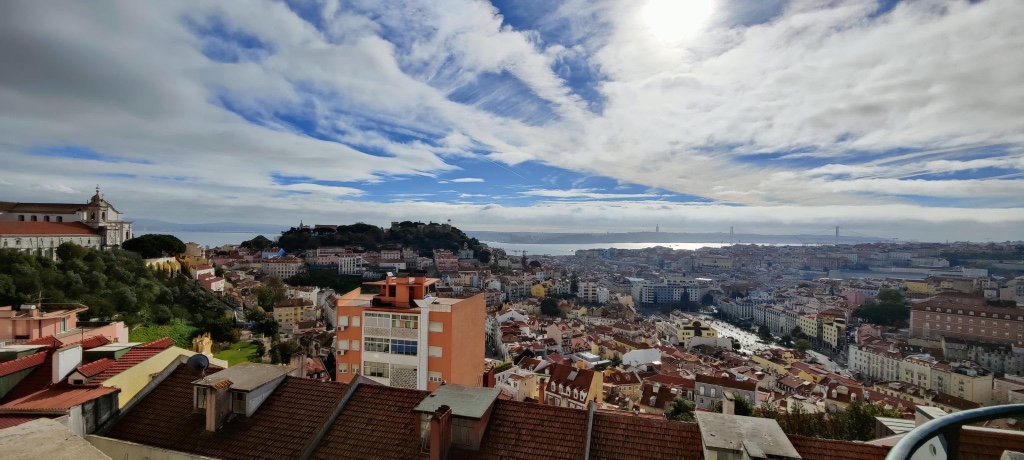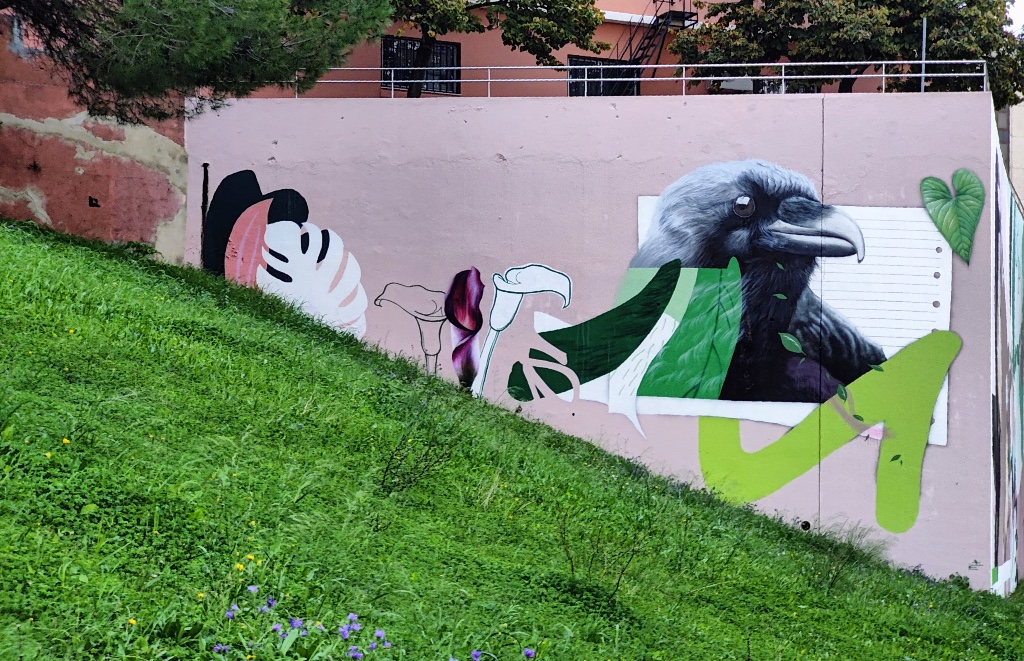
In reality you are hiking everywhere you go, even to our favorite neighborhood for drinks Barrio Alto. It lives on top of one of the Seven Hills, but is the absolute best for night life. We were grateful to find a pub called Corner Tavern which felt very much like home. We were relieved to find a pint of cold Guinness, as Lisbon is not a dark beer town. We met some lads from the UK who loudly joined our table. They were in the midst of birthday celebrations for one turning 30, the other 40. The older madlad dressed as the Tiger King, and the younger one, as his tiger. We had an interesting chat with the newly 30 year old who was perfectly abreast of American politics. When I showed surprise, he simply stated that everyone needed to follow the US globally, although he knew much more than the average American. Leaving them to our table and needing a change of scene we took to the streets, which were alive with battle songs from various football teams as the World Cup was still going strong there. It is also worth noting that the Portuguese are the calmest and least rowdy of all of the teams we have witnessed celebrating.
After pushing through the singing crowds we found an oasis called the Botanical Bar. It lured us in from the streets with house music playing loudly and no tv screen playing any World Cup games in sight. Rather oddly it had videos of models doing yoga with a balding yoga bro, intermixed with photo shoots of said models wearing lingerie. Fake greenery adorned the walls and ceiling and rows of gin bottles adorned the counter. The drinks we well balanced and a nice reprieve from the madness outside.
On Thanksgiving we didn’t have to worry about anything being closed, my thoughtful mother sent me a little birthday money for us to go out and enjoy ourselves. Mark had his heart set of trying the Lovecraft bar, a place with the most unusual craft brews and the towns best hamburgers. Although I have not been eating meat, they only had one sad vegan option so instead I ate their signature burger, the Lovecraftian: a beef burger on artisan brioche with fried egg, gouda, bacon, pickles, lettuce, tomato, red onion and house mayonnaise. Needless to say it was extreme, but also the best burger I have eaten with the exception of Mark’s smash burgers. I also won’t be eating meat for a time to come, save a shaved piece of salami every now and again with our charcuterie boards. I washed it all down with an ESB called Bishop’s Finger, which reminded me of my brother G. Paired with my burger came a side of sweet potato fries, also the greatest I have consumed, served with an aioli. I also realized that I like mayonnaise, just not the horrible stuff in the jar. If it is freshly prepared it can be exquisite, especially a good aioli, which is huge in this town. In hindsight, I should have been documenting our meals out a bit better, but I am trying to enjoy things in the moment and perhaps not look too much like the hipster blogger I am becoming.
For my birthday a few days later we had huge plans to walk to Torre de Belem and then out to a Korean restaurant I had been eyeing. That Monday morning I checked their hours and they were closed! I didn’t think they would be closed during the week, but it is common for not only museums, but monuments and restaurants alike. After realizing our sightseeing was out, I checked to see if the restaurant was open and nope! It was also closed that day. After laughing our heads off, a true comedy of errors, Mark was determined to make my day special so we decided on an udon noodle house for lunch and drinks in Barrio Alto. Unfortunately the noodle place wasn’t the best, but Mark promised we would get Korean at K-BOB the next day to make up for it. We had some awesome cocktails that evening at the Groove Bar. Regge playing lured us in and our gracious bartender supplied us with libations and Tremocos, a small waxy lupini bean that are salted in brine. you pop them open with your teeth and discard the hard outer coating. A perfect accompaniment to a perfect drink. Our bartender loved manhattans too, one of our shared favorite drinks, which he made to perfection. Across the walls an exhibit of collage art, which reminded me so much of my own. It was nice to see I have a kindred spirit somewhere in this town. I was also treated to some delicious Leonidas chocolates as a treat, earthy and bitter. We also had a cherry cordial, which can be served in a chocolate cup and tastes mostly like cough supup. Despite the changes in plans, a truly wonderful day.
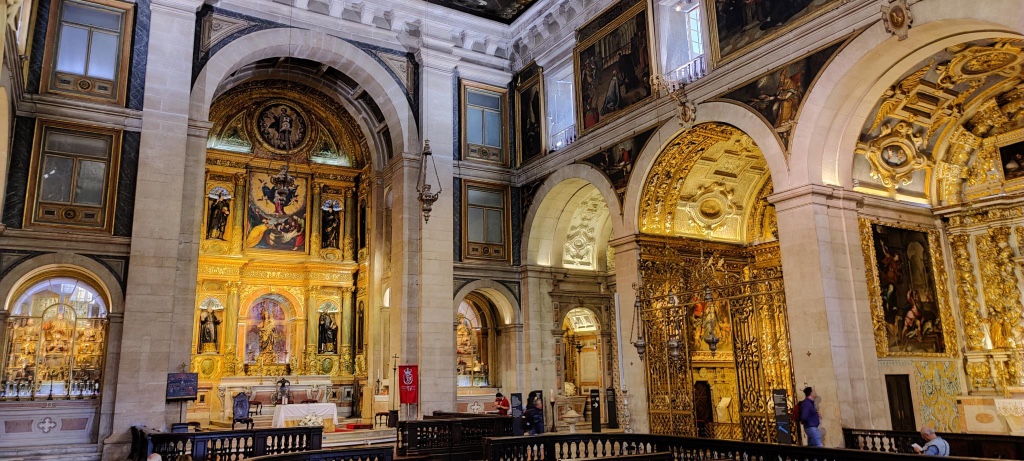
There are a thousand things to do around town. Some of my favorite days were spent in the ancient churches. Our first sightseeing day was spent at Igreja da Sao Roque, the earliest Jesuit church in Portugal (or anywhere in the world at the time). The original site of Sao Roque was originally a shrine to those who lost their lives during the plague of 1505. King Manuel I had sent a request to Venice for a relic of St. Roch, the patron saint of plague victims. The request was fulfilled and the shrine was dedicated in 1515, complete with a “Plague Courtyard” for the buried victims adjacent to the shrine. The Brotherhood of St. Roch was established to care for the shrine and they still maintain the site, along with the church that was later erected by King John III and the Jesuits in 1565. The exterior of the church is simple, in the Portuguese estriol chao, or “plain style”. Inside however is a Baroque masterpiece of glazed tiles, gilded woodwork and astounding oil paintings. Along the walls are chapels inset, each dedicated to various saints and the holy families. the most impressive being Chapel of St. John the Baptist. It was said the be the most expensive chapel in Europe, created with the wealth that then flowed from Brazil. The chapel introduced Rococo style to Portugal, deciding the future trends in Portuguese gilt work. The church continues to function today, and the old residences have been converted to the Museu da Sao Roque (late 19th century), which is filled with vestments, reliquaries, sculpture, religious artifacts and paintings. It is one of the few buildings that survived the earthquake of 1755.

One not so lucky site is the Convent of our Lady of Mount Carmel, founded in 1389. Reduced to a ruin after the earthquake, it is easy to imagine it in its former gothic glory. In what is left of the monastery, restored in the 1800 and 1900s in neo-gothic style is now home to what is left of the monastery libraries, which once housed 5000 volumes. Part has also been converted to a museum hosting the most fascinating reliquaries of the saints I have yet to see. It is also home to archaeological artifacts discovered by the Portuguese from early man in South America. One of the highlights of this monolithic place is the friendly little cat that lives there, he even has buttons in the gift shop with his sweet face. He goes wherever he wants and I am sure is the best pest control for the site.

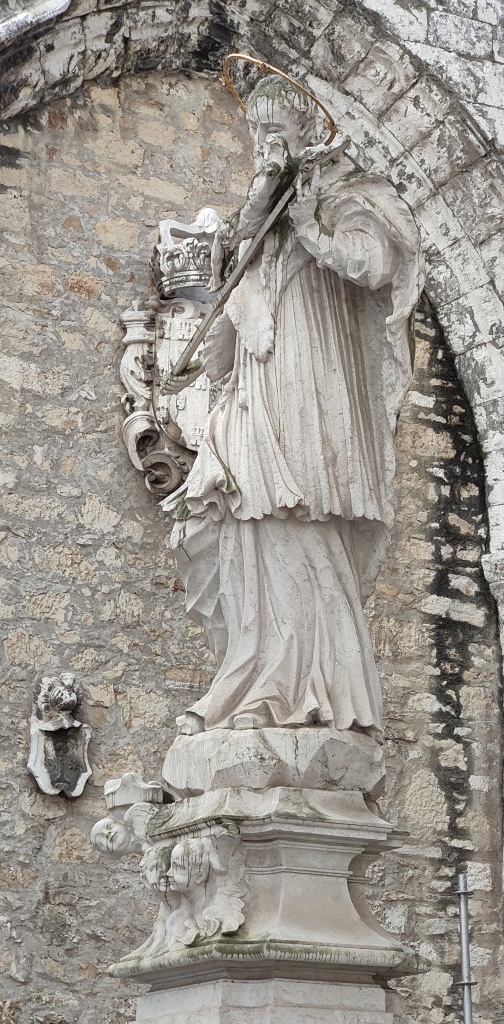
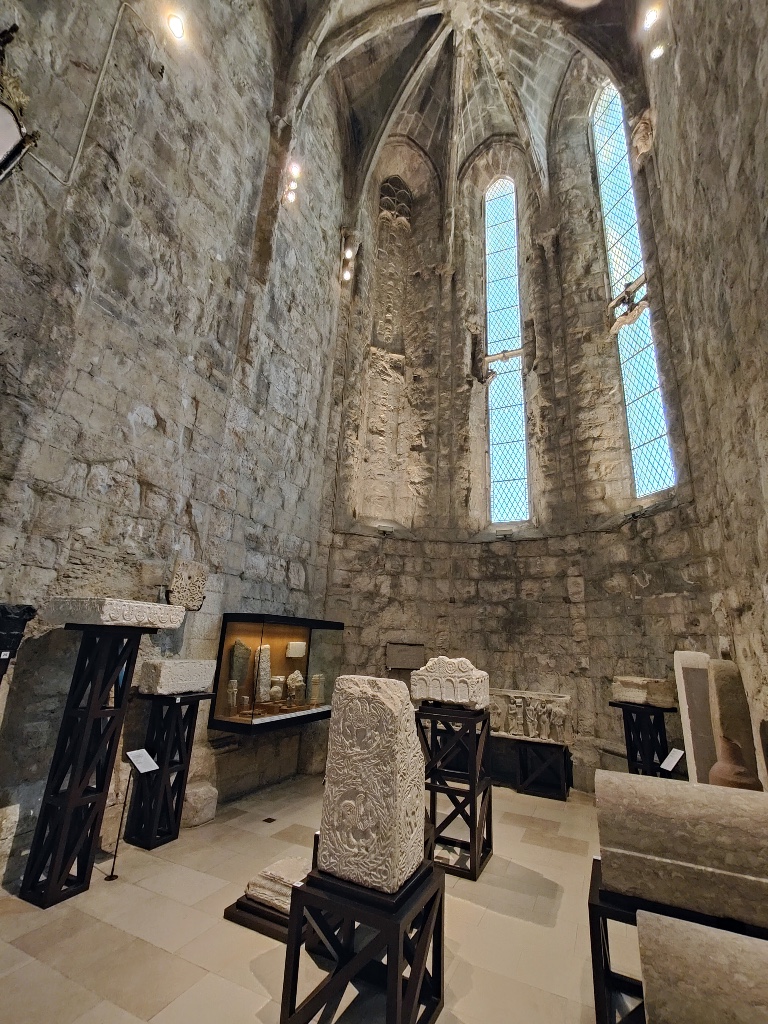
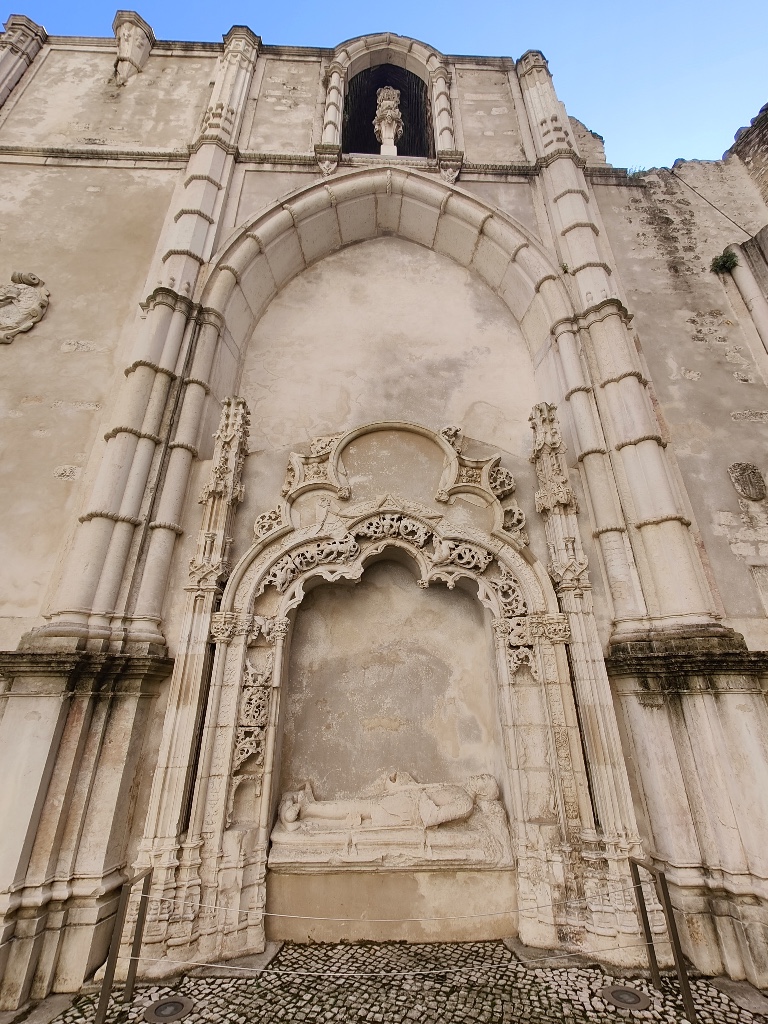

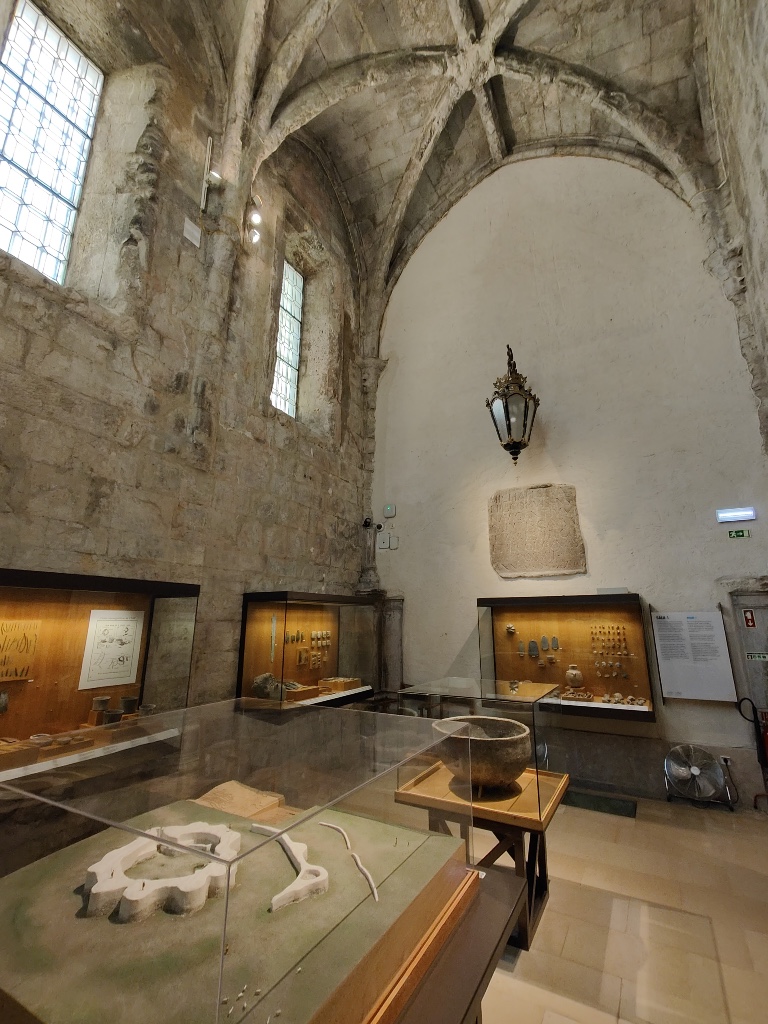
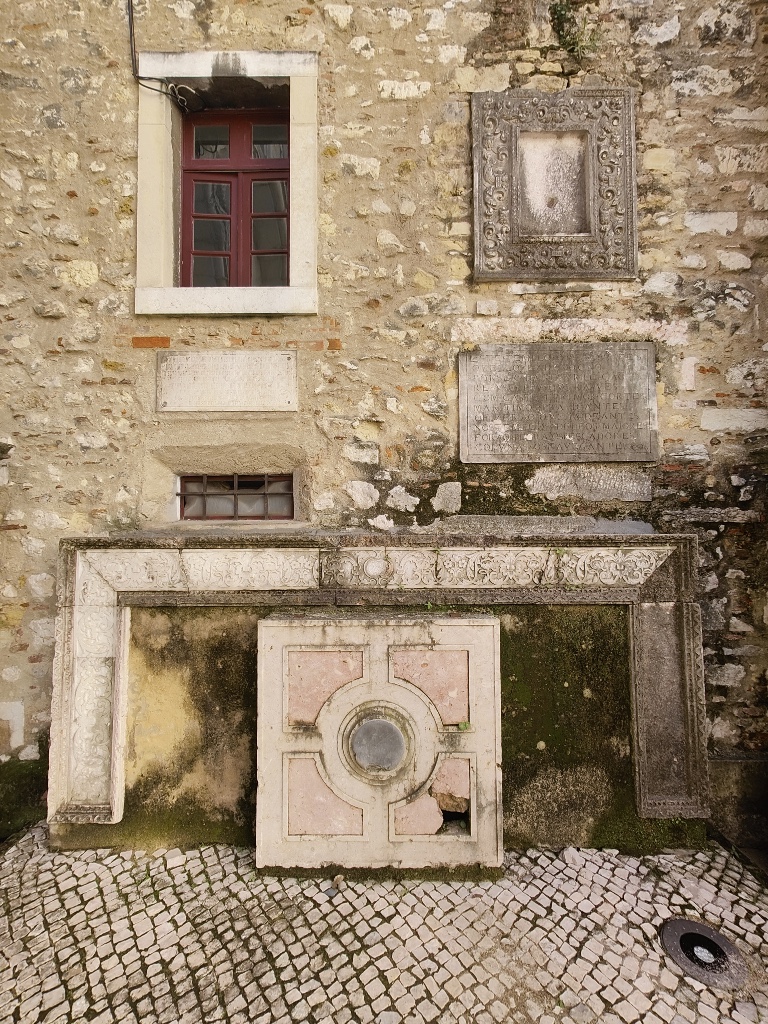
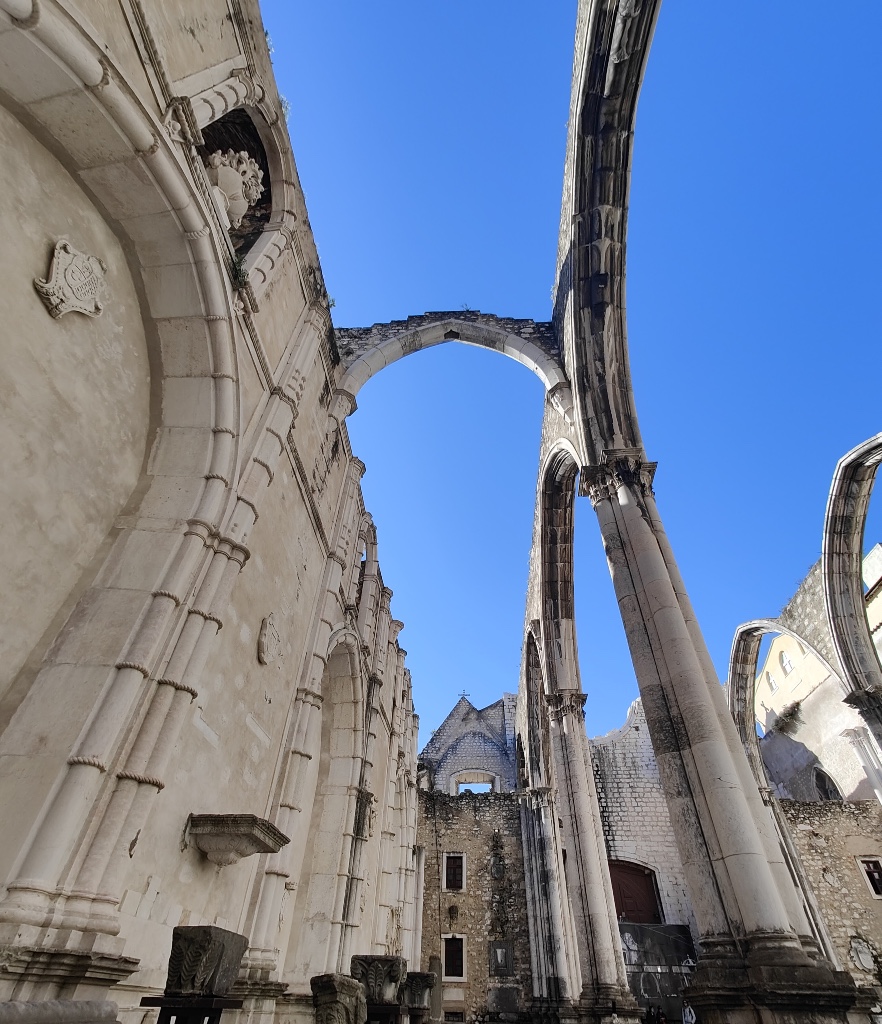
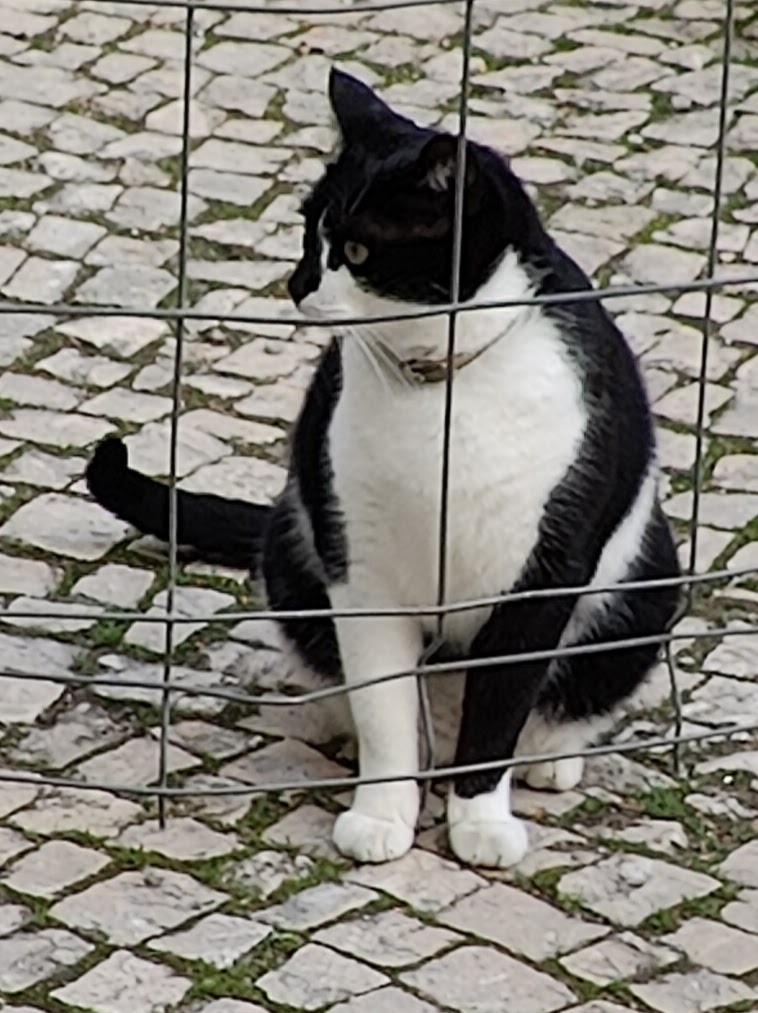
On Sundays the Museum of Natural History and Science is free, along with the Botanical Garden of Lisbon. The History Museum, created in the second half of the eighteenth century, housed the Royal academy of Sciences. The Laboratorio Chimico is one of the only survivors of the great teaching facilities of early European universities. One of the most important collections of chemistry in Europe is housed here. Huge labs full of old scientific equipment, along with jars of various substances decorate the expansive rooms. The auditorium contains an incredible dome with a gallery of polished wooden benches and tables embracing the room and overlooking an impressive podium where great scientists were once taught.
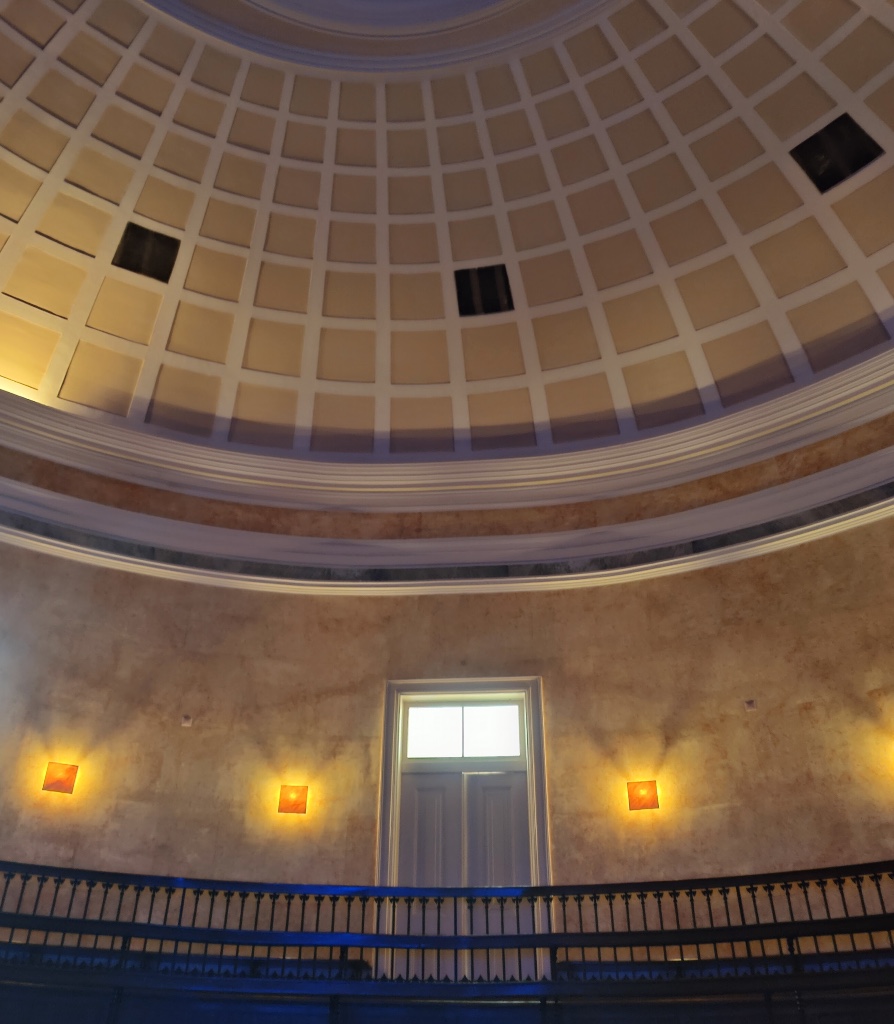
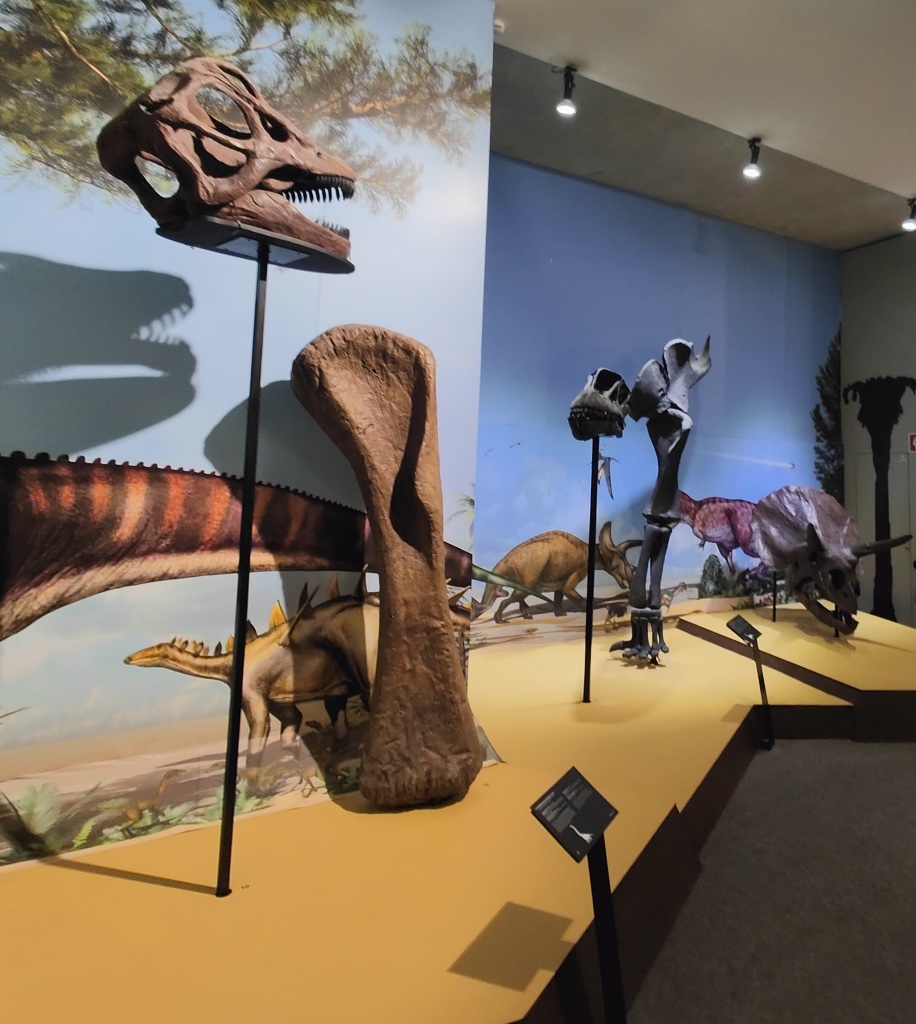
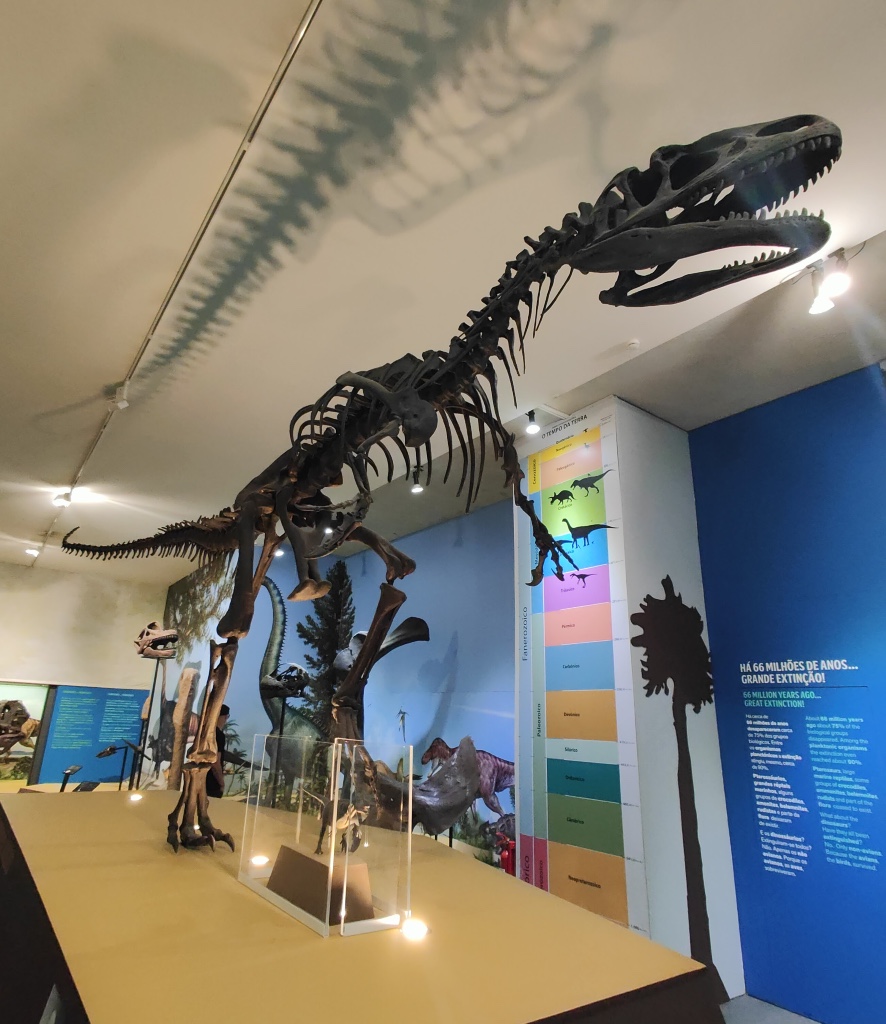
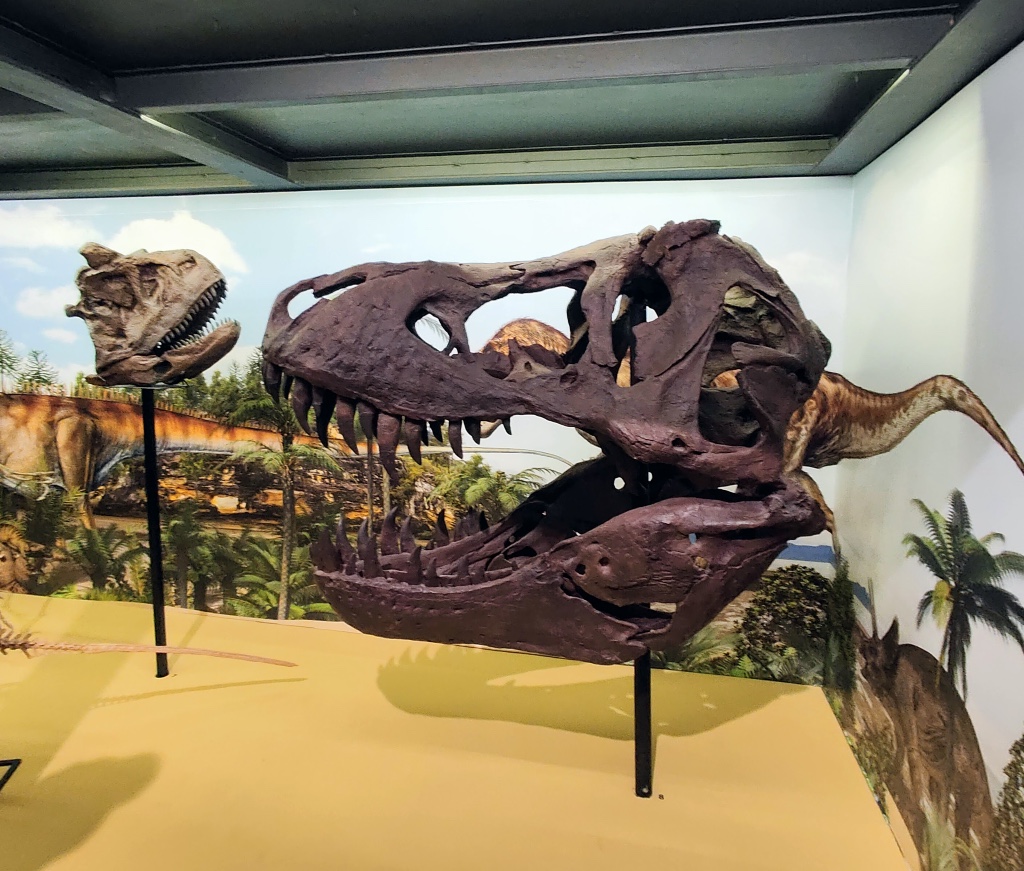
There were several exhibits in the rest of the Museum, Among Dinosaurs and The Travels of Scientific Illustration in Portugal being my favorites. The museum had a complete Allosaurus skeleton, a dinosaur that had once been thought to only have lived in North America. The theropods acquired avian characteristics that evolved into the birds we know today. A T-rex, Brontosaurus and Triceratops skull were the other highlights to the exhibit. It puts things in perspective to see something that lived 150-90 million years ago.
I have always been obsessed with scientific drawings, forever grateful to scientists and artists alike that record animals that I may never get the chance to see or are no longer with us. The Illustrare exhibit had a vast collection of scientific drawings from the last six centuries enlarged on panels hanging in an open space complete with sounds from the nature it depicts. Large glass cases contained journals open for you too see the carefully rendered wildlife inside. Along the wall was a row of boots from field workers from a recent expedition, more cases housing their photography equipment and other various tools. The amount of detail in every line and brushstroke a lesson in realism. I could have studied these for hours but as the afternoon was progressing, we decided we wanted to see the botanical gardens before the day was over.
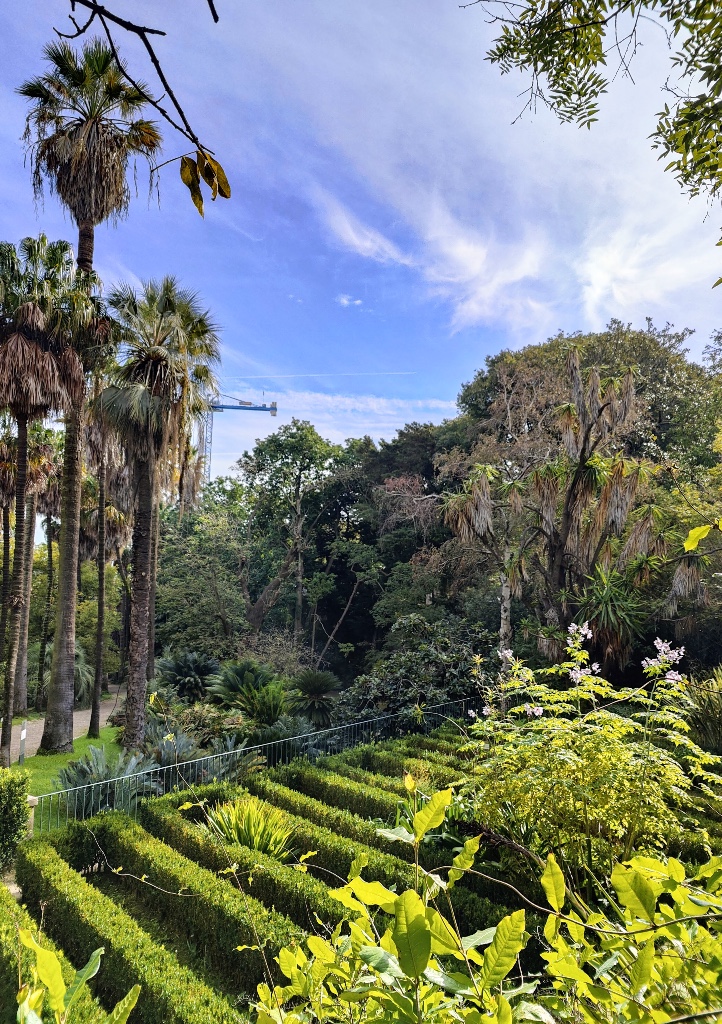
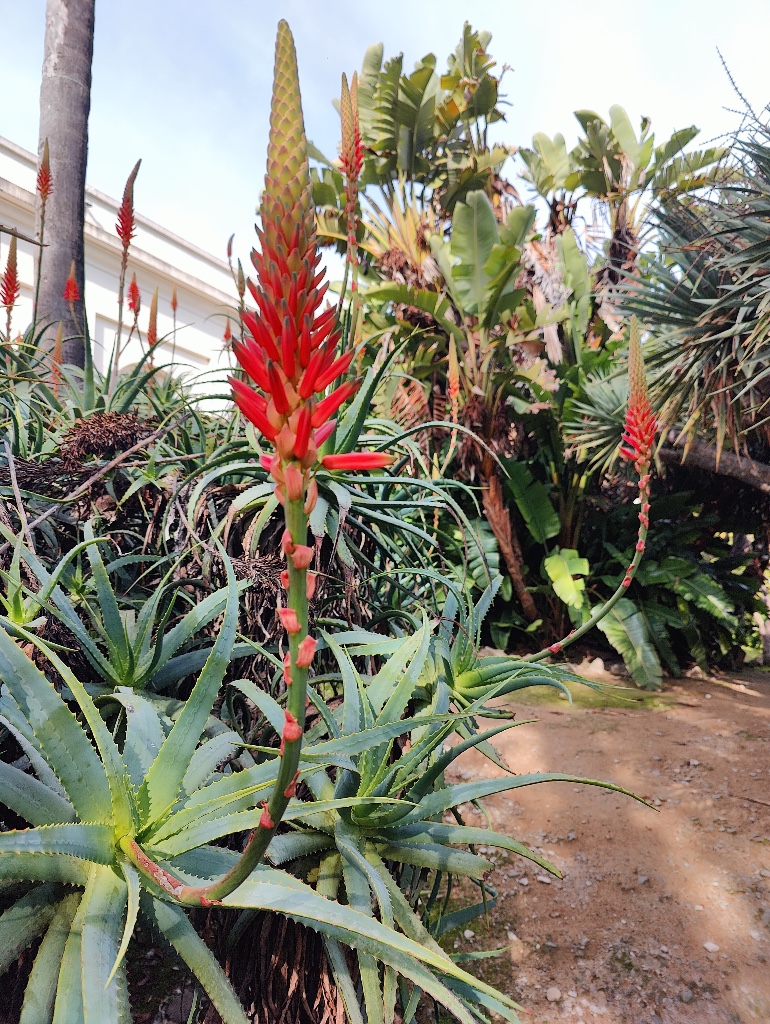
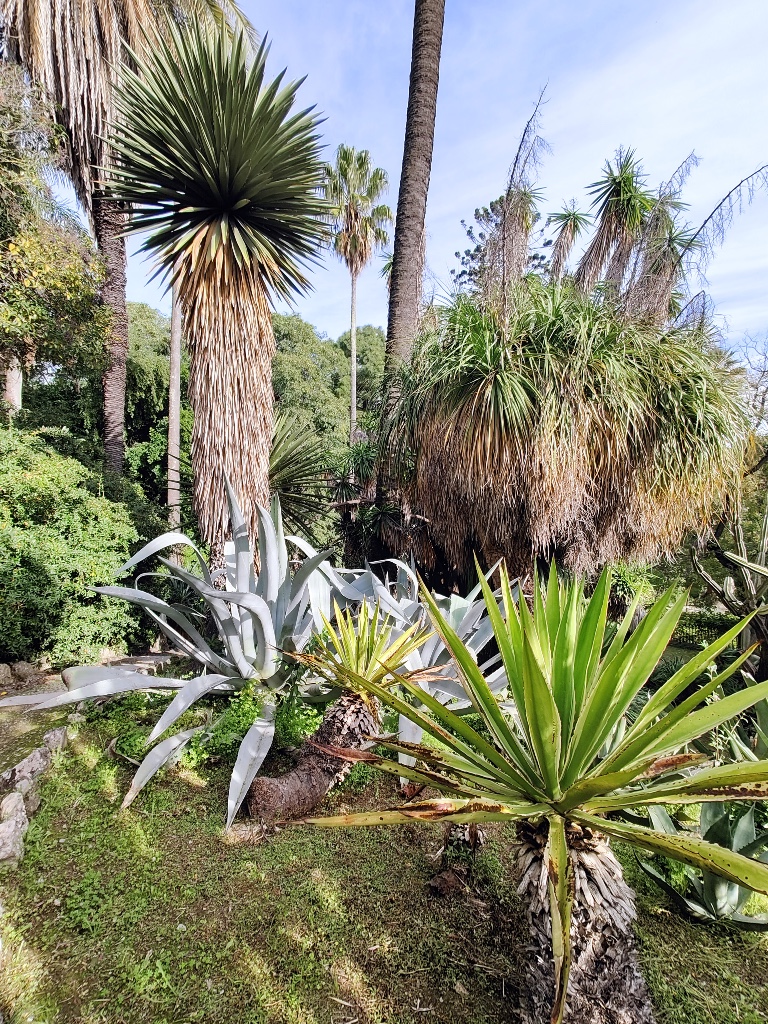
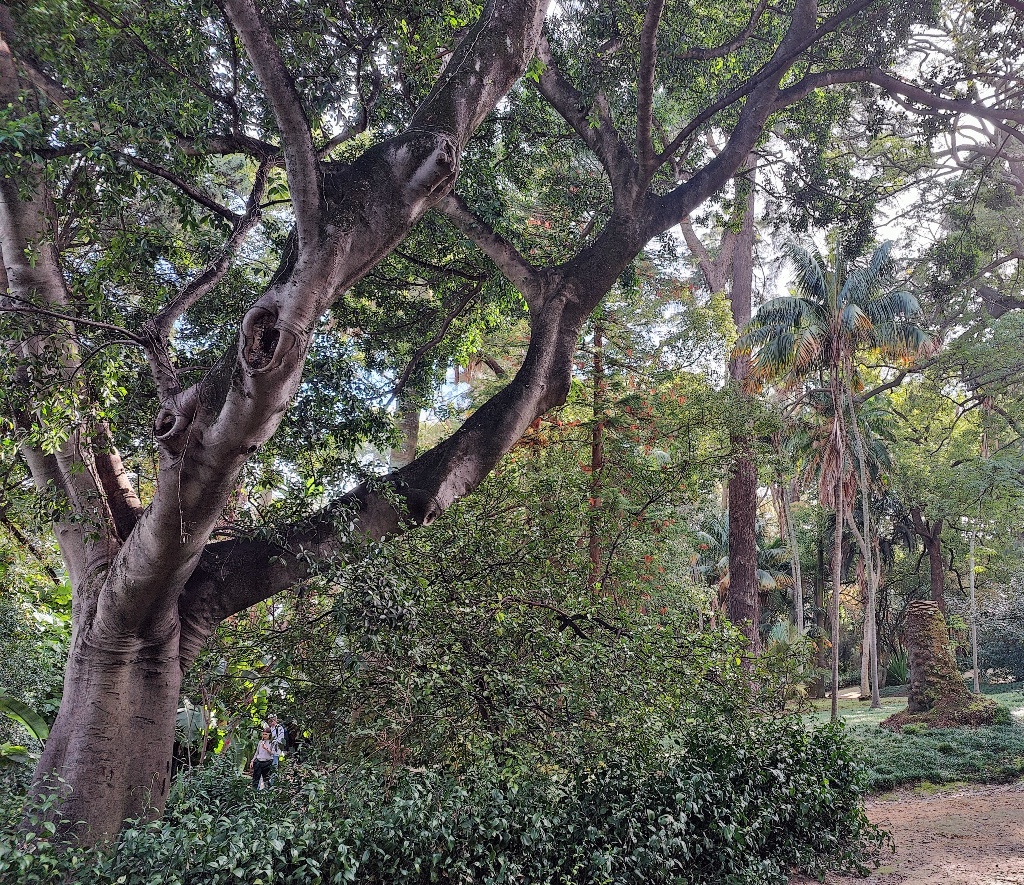
The Jardim Botanico de Lisboa is a scientific garden designed in the mid 19th century to complement botanical research for the Escola Politencia. Plants were brought from the four corners of the world where territories under the Portuguese reigned. The collections were systematically planted for research and conservation. The first catalog of the gardens seeds were published in 1878. In 1892, the garden was further embellished by introducing ornamental plants. The diversity of palm trees are truly exceptional, as they come from each continent giving the garden its tropical character. Some of the cycad specimens are near extinct, being only preserved in a few botanical gardens across the globe. It is a magical place, full of tropical species from New Zealand, Australia, China, Japan and South America. They thrive in the mild climate of Lisbon and provide their own unique microclimates throughout the park.
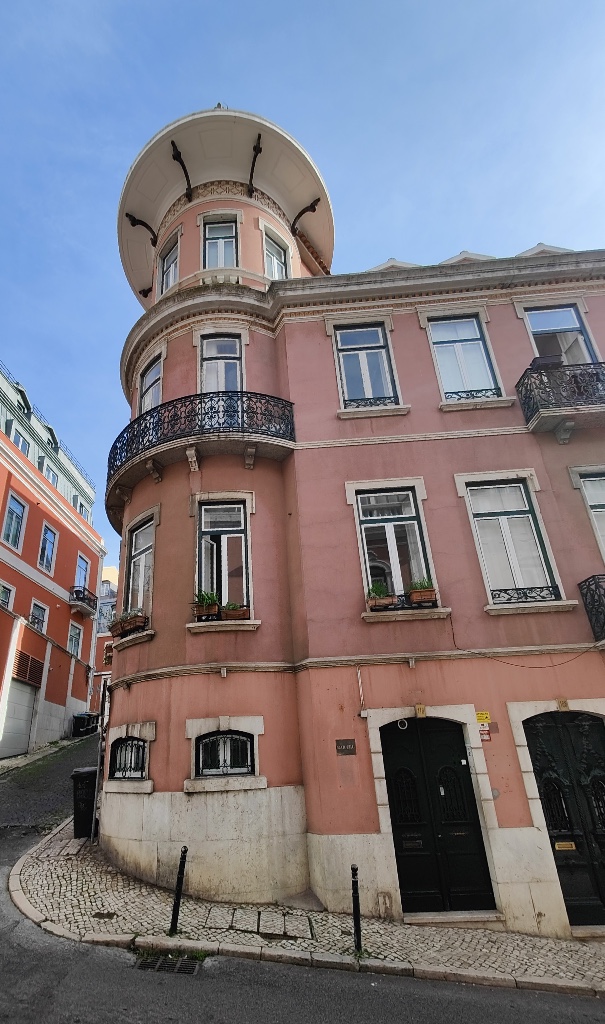
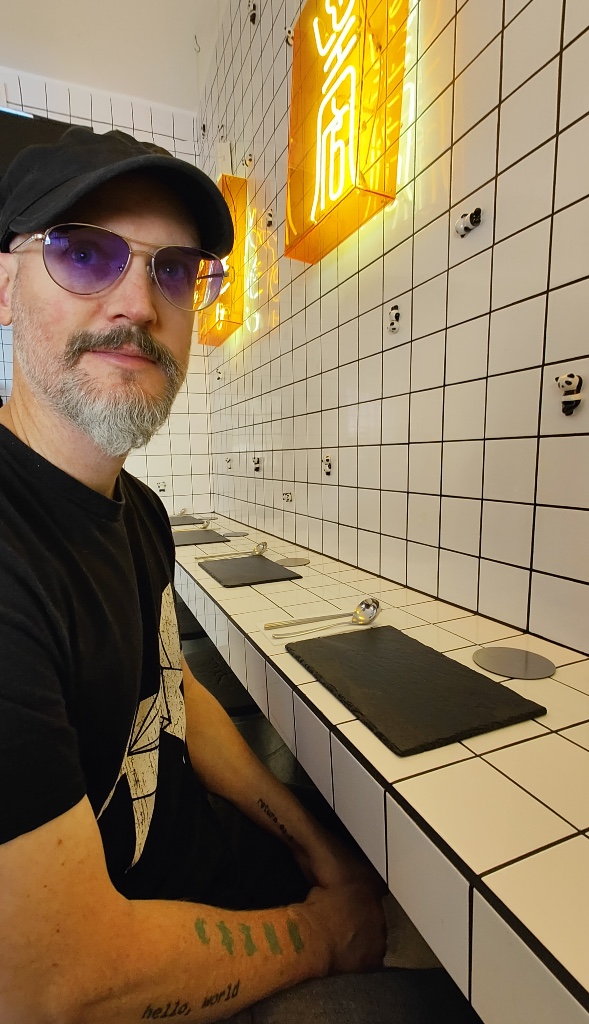
This particularly perfect day was finished with the best ramen I have ever eaten at the Panda Cafe. A tiny little room with tiled walls and counters, with a shared table in the middle. In total it could seat 20 people max. Ceramic pandas in cheeky poses were plastered over the walls with bright neon lights reflecting of the tiled surfaces. I requested crispy tofu as a garnish to my ramen, it was so delicious that even Mark said he enjoyed it! We were sad that our time was ending in Lisbon but also excited to see what Porto is all about.
